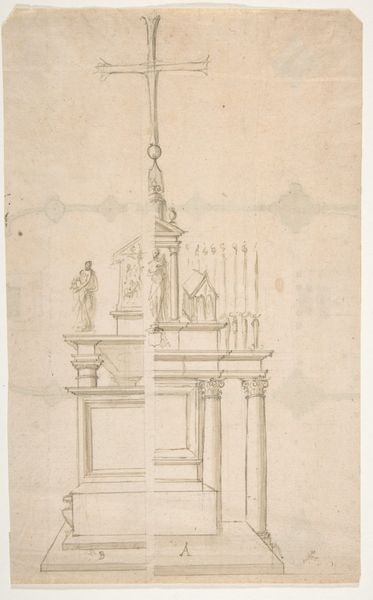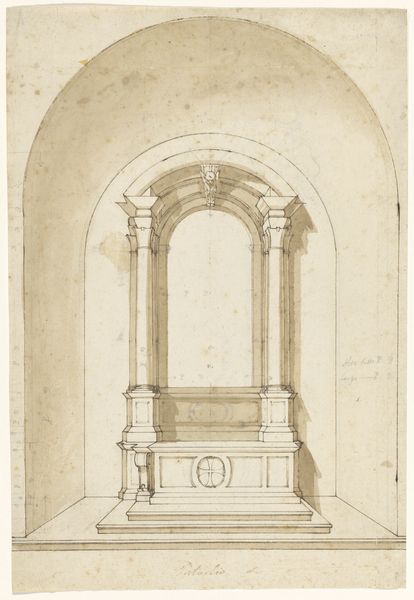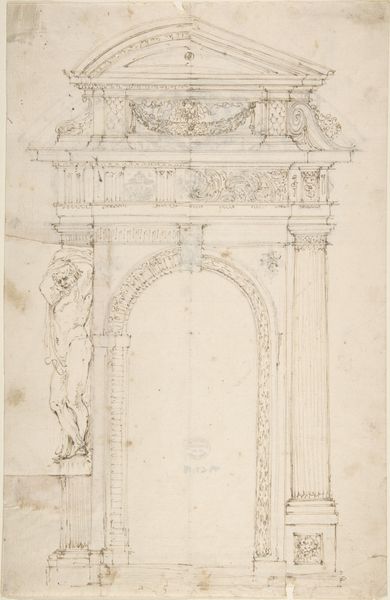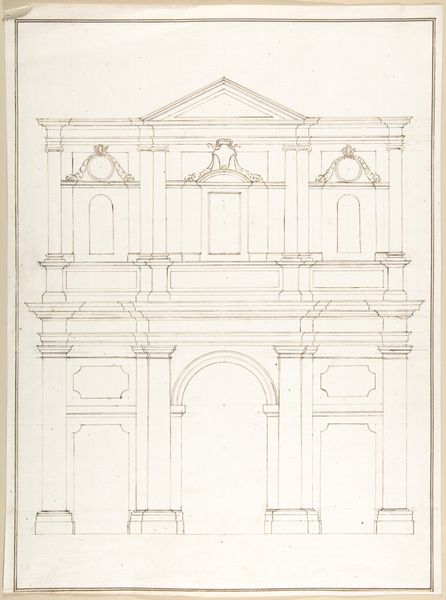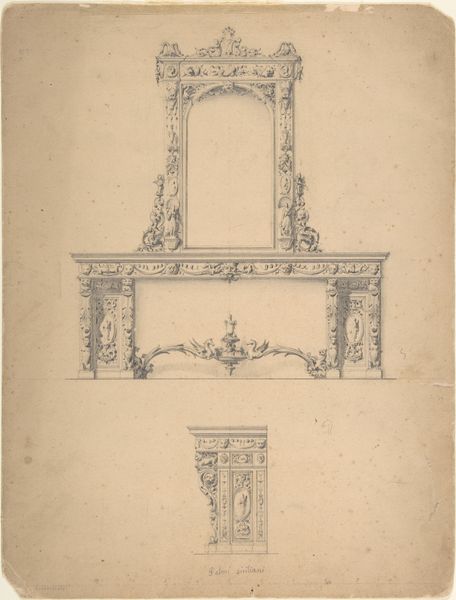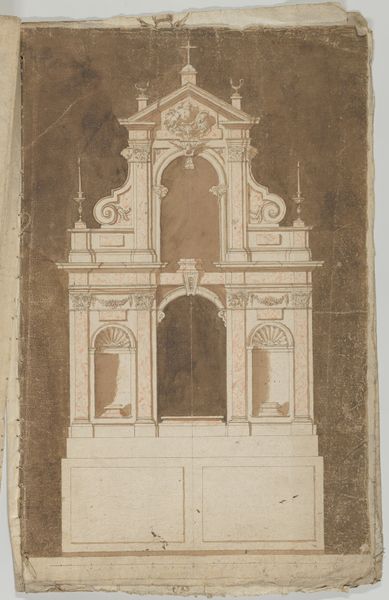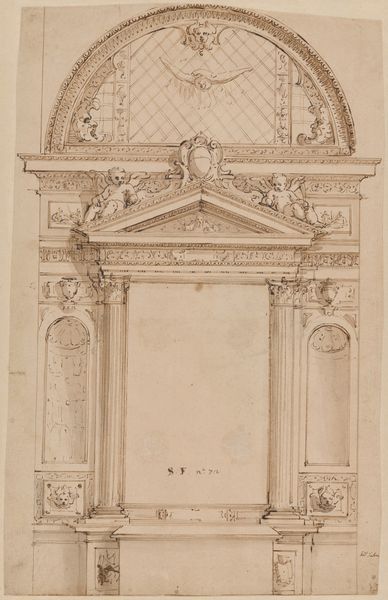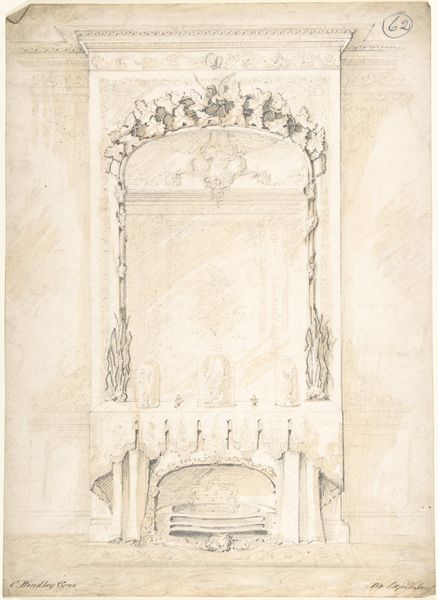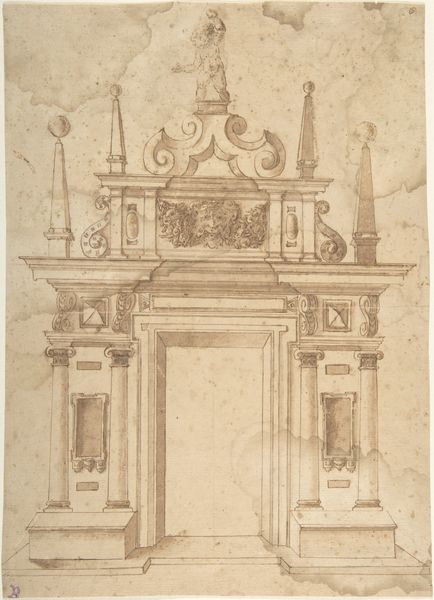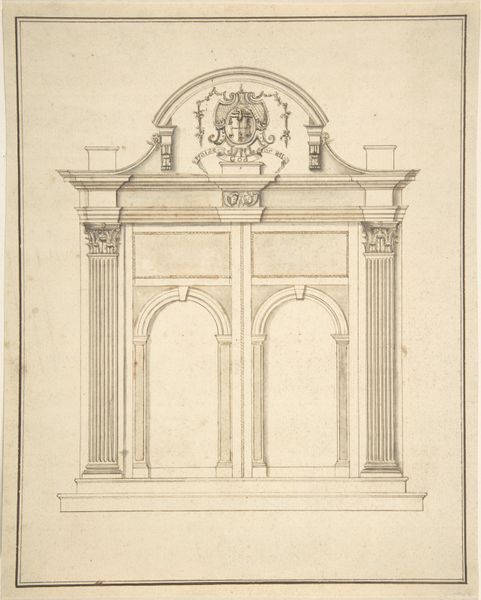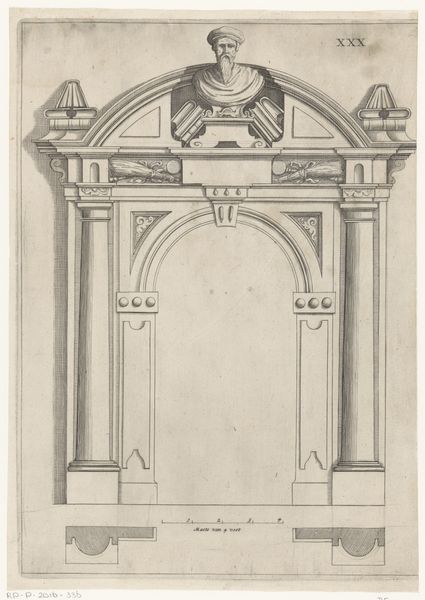
drawing, paper, ink
#
drawing
#
medieval
#
etching
#
paper
#
form
#
ink
#
architectural drawing
#
line
#
cityscape
#
realism
Dimensions: height 414 mm, width 229 mm
Copyright: Rijks Museum: Open Domain
Editor: This drawing, entitled "Poort te Deventer," meaning "Gate in Deventer," is attributed to Jan Striening, though created sometime between 1837 and 1903, a long artistic life! Done in ink on paper, there's a lovely starkness to the line work. I am struck by how this gate, rendered so plainly, somehow manages to be incredibly imposing. What's your take? What draws you to this particular depiction? Curator: You know, what's so compelling is the imagined past that whispers from this almost clinical depiction. Striening invites us to consider how even simple lines can speak of weight, history, and perhaps a touch of melancholic reflection on the passage of time. Note how the date “1613” is inscribed right over the archway. I feel invited to see past this rendering of realism to find how art can sometimes echo forward, not back, and what once stood so strongly is now on the precipice of change, a little bit threadbare even then, don’t you think? Editor: Absolutely, it is the simplicity that makes the drawing speak in the past tense. But I am curious about the stone faces at the bottom of the columns...What purpose might these serve beyond simple decoration? Curator: Excellent question! I find it fun to imagine them as symbolic guardians, silent observers, even those playful spirits often found grinning mischievously from old facades. Maybe they are grimacing because they, too, foresee the city’s alterations, huh? Editor: I had not thought of them as ‘guardians’, more as design features. But the more I consider your suggestion, the more these 'guardians' speak to the human presence of this space in Deventer! I might use this next time I come! Curator: Precisely! It is as if Striening implores us to question whether we merely observe art or are drawn into a dialogue with it; or in this case, whether this threshold continues to beckon a similar perspective with time, ever changed yet always the same. Food for thought, for both you and me!
Comments
No comments
Be the first to comment and join the conversation on the ultimate creative platform.
